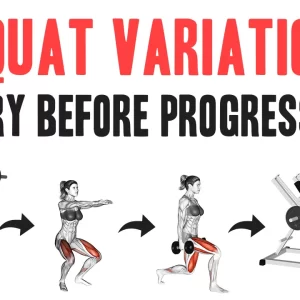Fitness enthusiasts often encounter hurdles along their journey; one of the most challenging setbacks is bone injuries. According to Safer America, around 40,485 exercise equipment-related injuries led to death in 2021. Additionally, around 368,739 incidents resulted in non-fatal injuries.
Whether you’re an athlete, a dedicated gym-goer, or someone trying to stay active, a bone fracture can disrupt your training routine. However, with the right coping strategies, navigating through these challenges and emerging stronger than before is possible.
This article explores coping strategies for dealing with bone injuries in training, providing insights and tips to aid recovery and maintain motivation.
Understanding Bone Injuries
Bone injuries during exercise can occur due to various factors, and understanding them is crucial for prevention and effective management. One common cause is overuse, where repetitive stress on a particular bone exceeds its capacity to adapt and recover. This often happens in repetitive activities such as running, jumping, or weightlifting.
Another contributing factor to bone injuries is improper technique or form during exercise. Incorrect form can strain certain bones or joints excessively, increasing the risk of injury. For example, improper squatting techniques can strain the knees or lower back.
Inadequate warm-up or cool-down routines can also predispose individuals to bone injuries. Without proper warm-up, muscles and bones may not be sufficiently prepared for the demands of exercise, increasing the likelihood of fractures. Similarly, skipping cool-down activities can impede the body’s ability to recover and repair after exercise, leaving bones vulnerable to injury.
The National Health Service has listed some activities to warm up before exercising. To begin with, you can march on the spot, forward, and backward for around three minutes. The next thing you can do is heel digs; try to get 60 in 60 seconds.
Similarly, you can do knee lifts, shoulder rolls, and knee bends for some time before exercising. This will help make your body flexible so you do not suffer major injuries while working out.
Coping Strategies
Experiencing a bone fracture during exercise can be challenging both physically and mentally. Coping with such an injury requires a multifaceted approach that addresses the physical healing and the emotional aspects. Here are some coping strategies:
Seek Professional Guidance
When you experience a bone injury, seeking medical attention promptly is crucial. A qualified healthcare professional, such as an orthopedic specialist, can accurately diagnose the injury and recommend an appropriate treatment plan.
Follow the prescribed treatment regimen diligently. Depending on the severity of the fracture, it may include rest, immobilization, physical therapy, or surgery. If the injury is more severe, you can also opt for home nursing services.
When looking for a home nursing service provider, it is vital that you check the nurse’s education and qualifications. Graduations like Bachelor of Science in Nursing (BSN) or Accelerated BSN (ABSN) are the minimum requirements for becoming a licensed nurse in the US.
You should look if the nurse you are being assigned has these qualifications. While getting a BSN degree takes four years, ABSN is completed within two years. However, this does not mean that nurses with ABSN are less qualified.
As Rockhurst University states, ABSN is an accelerated way of transitioning a career into nursing. Aspiring nurses with a bachelor’s degree can enroll in these programs and join the industry they love.
Moreover, there are also online ABSN programs available. These programs are even better as they allow individuals to become nurses without disrupting their lives. In an online ABSN program, the coursework is 100% on the internet. This means the candidates can access it from anywhere and anytime.
Maintain a Positive Mindset
Maintaining a positive mindset becomes paramount when faced with the challenge of coping with bone fractures while exercising. Firstly, it’s essential to acknowledge the setback while simultaneously reminding oneself of the body’s resilience and ability to heal. Understanding that setbacks are a part of the journey toward fitness and wellness can help foster a positive outlook.
Embracing patience is crucial. Recognize that healing takes time, and rushing the process may lead to further complications. Instead, focus on the aspects of your health you can control, such as following the doctor’s advice and engaging in rehabilitative exercises.
Practice gratitude for the abilities you still possess. Even with a fracture, there are likely many activities you can still engage in to maintain your overall well-being. Whether it’s gentle stretches, meditation, or simply spending time outdoors, find ways to stay active within the limits of your condition.
Seeking support from friends, family, or a support group can be immensely beneficial. Sharing your challenges with others who understand and empathize can provide comfort and motivation during difficult times. Additionally, consulting with a mental health professional can offer strategies for coping with stress and maintaining a positive mindset.
An NCBI article mentions the importance of friends and family support during bone fractures and other health conditions. The article states that having support makes you stronger, which can reflect in healing. It also points out an article from the American Journal of Lifestyle Medicine. This article mentions the connections that humans build and how they affect their health.
Focus on Nutrition and Hydration
Adequate nutrition plays a crucial role in the healing process of bones. A balanced diet rich in essential nutrients such as calcium, vitamin D, protein, and other micronutrients helps support bone regeneration and repair. Including foods like dairy products, leafy greens, nuts, seeds, fish, and fortified foods can provide these vital nutrients.
According to a ScienceDirect study, you should not limit your focus to vitamin D, calcium, and protein. Many other dietary nutrients can improve bone health. For instance, vegetable-derived nitrate and vitamin K1 can reduce your chances of getting re-injury. Science-backed evidence has also shown that balanced diets like those in the Mediterranean can help improve musculoskeletal health.
Hydration is equally important for bone health and overall recovery. Dehydration can hinder the body’s ability to transport nutrients to the injured site and remove waste products, delaying healing. Maintaining proper hydration levels by drinking water throughout the day is essential, especially during exercise when fluid loss increases.
Frequently Asked Questions
How Long Does It Take to Recover From a Bone Fracture?
The recovery time for a bone fracture varies depending on several factors. Some of these factors include the severity of the injury, the individual’s overall health, and adherence to the treatment plan. Small fractures could heal in a few weeks. However, more severe fractures can take several months to recover fully.
Can I Still Stay Active With a Bone Fracture?
It’s essential to consult with a healthcare professional before engaging in physical activity while recovering from a bone fracture. In many cases, low-impact exercises that don’t stress the injured bone can be incorporated into your routine to maintain fitness levels without risking further injury.
How Can I Prevent Bone Injuries in the Future?
To reduce the risk of bone injuries, it’s crucial to prioritize factors such as proper nutrition, adequate rest, gradual progression in training intensity, etc. Cross-training and incorporating variety into your workouts can also help prevent overuse injuries.
In conclusion, dealing with a bone injury in training can be challenging, but it’s not insurmountable. You can navigate the recovery process by following the tips in this article. Remember that patience and perseverance are key; with dedication and proper care, you can emerge from the experience stronger and more resilient than before.



